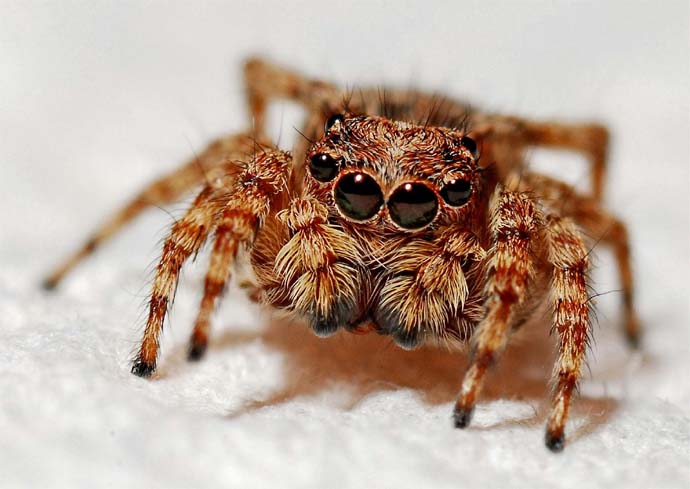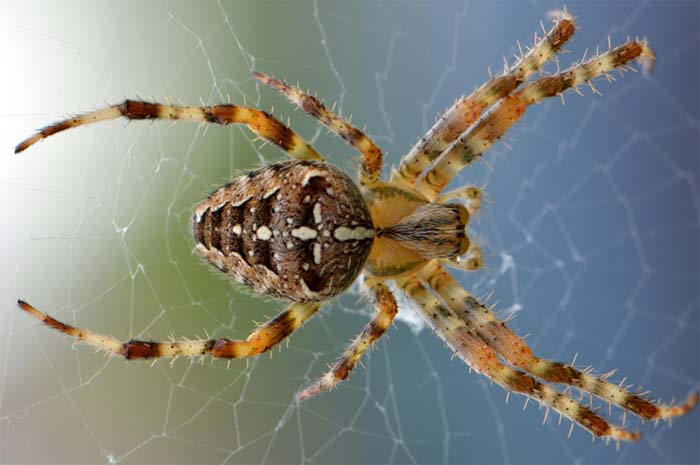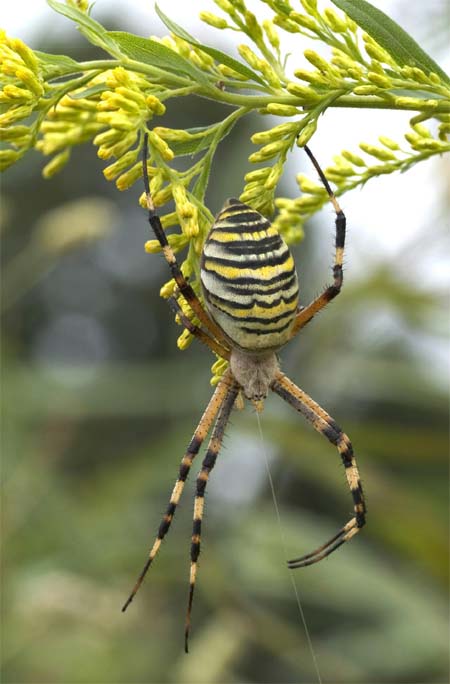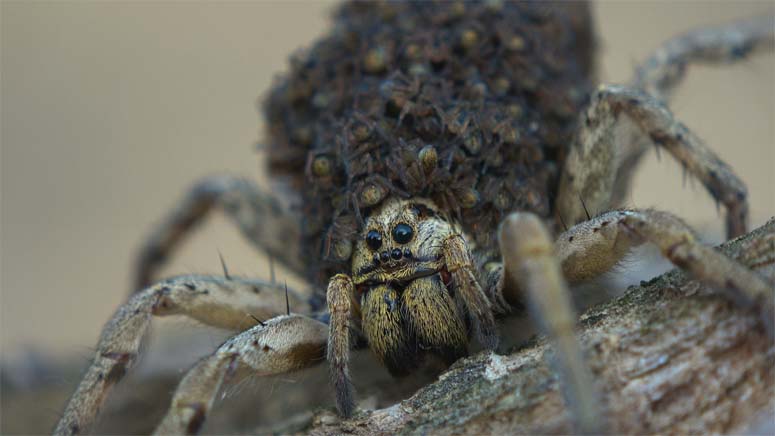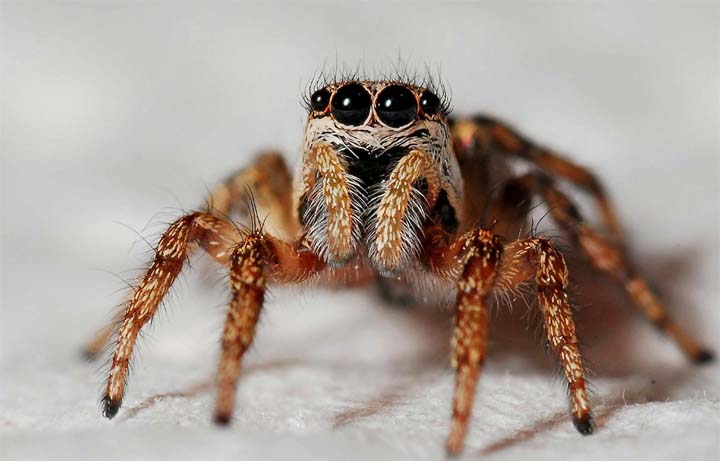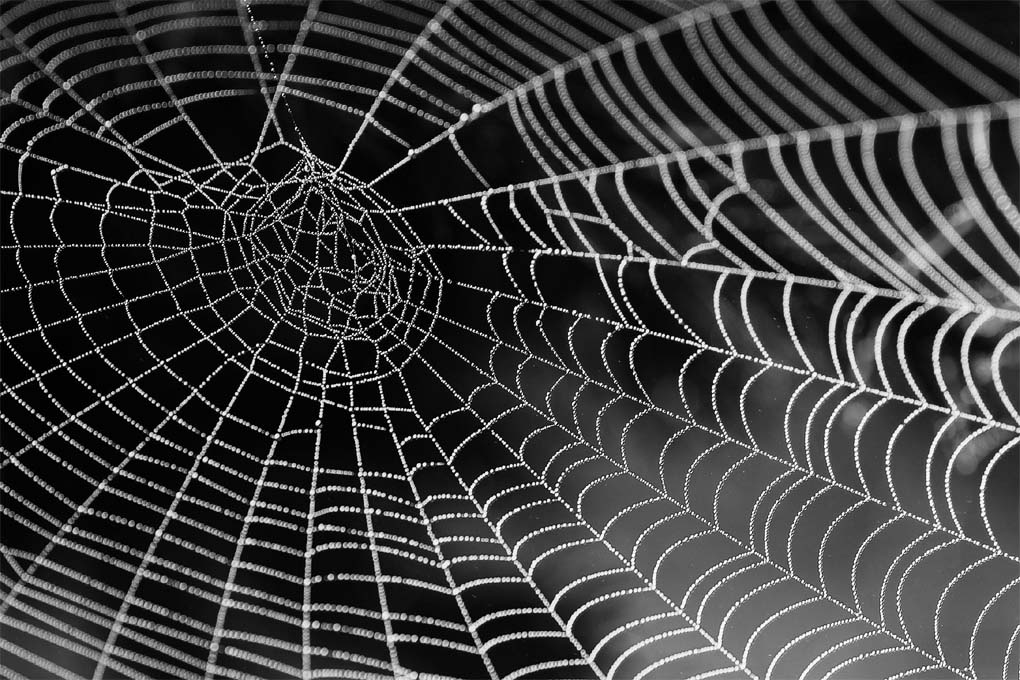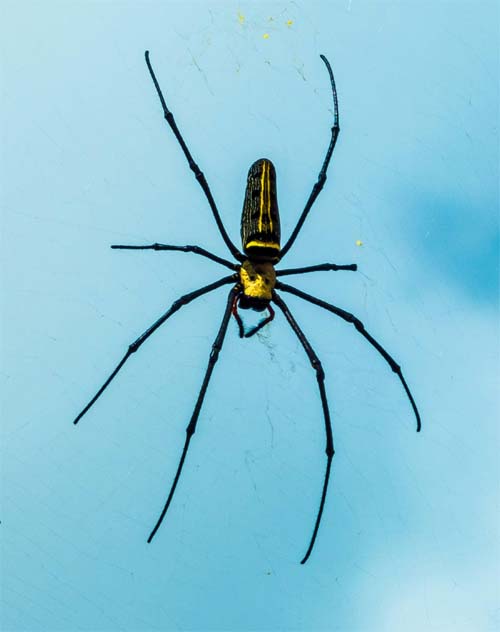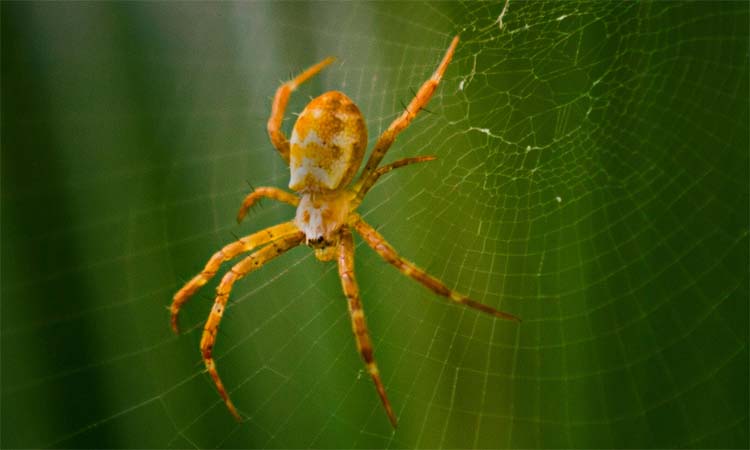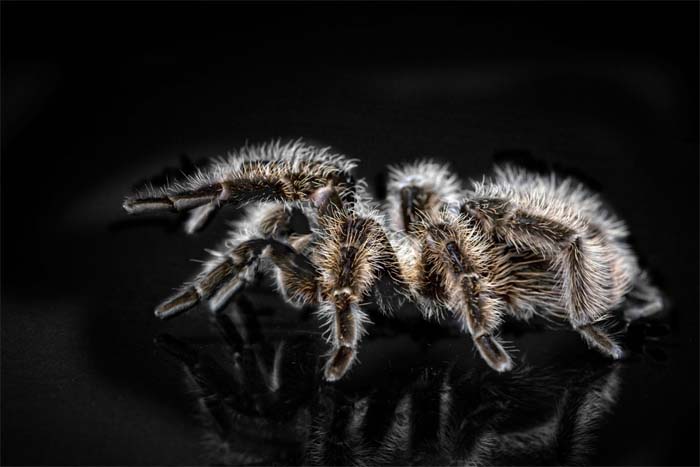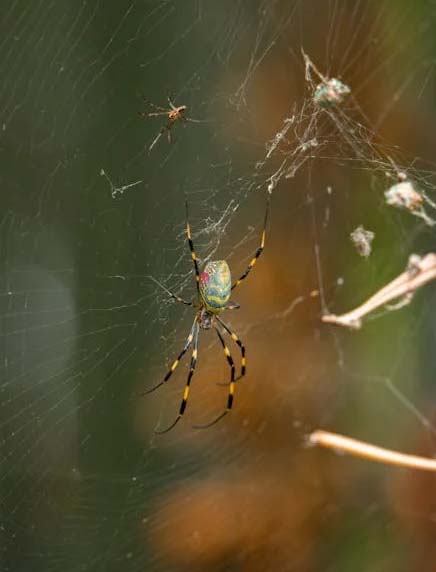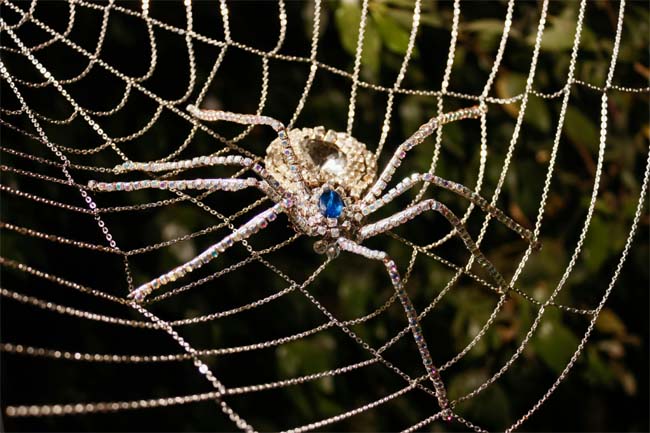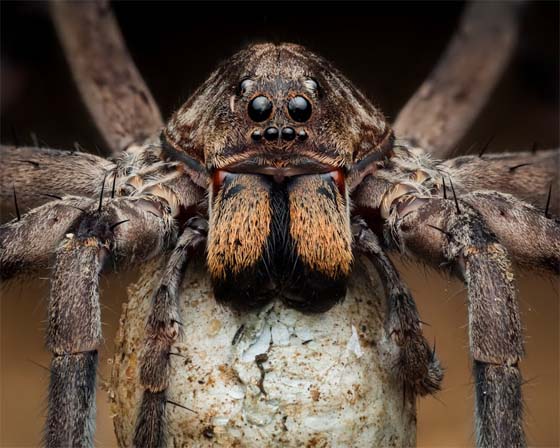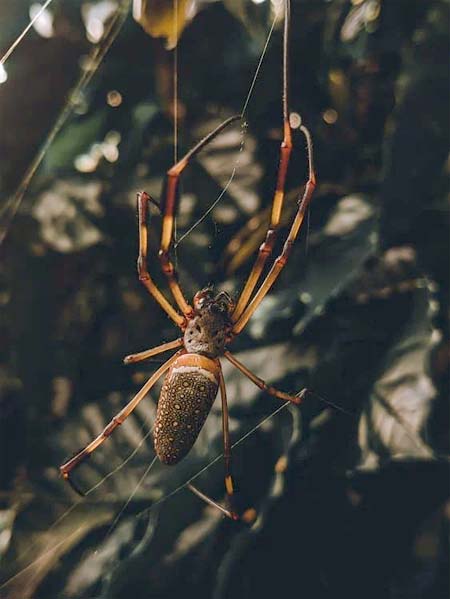SPIDER MYTHS DEBUNKED
ARACHNOPHOBIA - NOT!!
Spider myths abound! Spiders tend to get a very bad rap. Many of us have a real aversion to them. It could be their hairy legs or maybe just our knee-jerk response to something moving quickly out of the corner of our eyes. Or maybe the way they seem to appear from parts unknown and can return just as quickly through the tiniest of holes or cracks.
And, let's face it, no one appreciates walking into a spider's web in a dark and creepy basement or attic!
Have you ever received a bite from some unknown cause and immediately attributed it or had it attributed by a doctor to a spider's bite? This is one of the more common spider myths and it happens more often than you might think. And yet it takes an Arachnologist with years of training to properly identify a spider bite. Physicians and even pest control operators rarely get the training needed to do this.
So where does most of this arachnophobia or fear of spiders come from? Is it possible much of the information we have about spiders is really misinformation? The answer may be a resounding 'yes.'
Below are some spider myths that have been thoroughly debunked by experts and yet still have a way of coming back as truths. It may be enlightening to see how much of this misinformation you may actually have believed!
1. MOST SPIDERS ARE AGGRESSIVE.
FALSE. This is one of those common spider myths that has been fueled by scary movies and the media. The truth is a spider's first reaction to being disturbed or having its web broken will be to run away and hide. Those spiders who live in your house have probably descended from generations of spiders that have never even been outside of the house. The last thing they would want to do would be to attack a human.
2. SOME SPIDERS ARE POISONOUS TO HUMANS, OTHERS ARE NOT.
FALSE. Almost all spiders have venom. This venom is used as an insecticide to subdue the insects it catches. It is true that some spiders' venom can cause localized pain in humans but the wasp is far more dangerous and can actually cause death in some individuals.
Of the some 50,000 or more spider species in the world, only about 25 have venom that could cause some discomfort to humans. In any given area, there will be zero to 3 of these spiders.
Scientists are now researching the use of spider venom in medicine and as non-polluting insecticides.
3. SPIDER BITES CAN CAUSE INFECTIONS AND OTHER DANGEROUS MEDICAL CONDITIONS.
UNTRUE. Spider bites are actually quite rare. If you have a bite and cannot find an offending spider or some reliable connection of that bite to a spider, a spider bite should not even be considered.
Certain spiders such as black widows and brown recluses can give serious bites to people that require medical treatment. This is true. However, these spiders are not aggressive and rarely bite. If they do, they usually don't inject venom. Yet, misinformed reports will claim they are deadly. This, in itself, can lead to inappropriate medical treatment at the worst or the risk of exposure to toxic pesticides to rid the area of spiders.
4. YOU CAN ALWAYS TELL A SPIDER BITE BECAUSE THERE WILL BE 2 PUNCTURES.
SOMEWHAT TRUE BUT MOSTLY FALSE. Spiders have 2 venom-injecting fangs and will typically bite with both at the same time. The difference is, in any spider smaller than a tarantula, the entry points of the 2 fangs will be so close together there is very little if any visible separation. The fangs are so slender and sharp that the actual entry points are all but invisible. It is also true that a bloodsucking insect can also be the cause of a bite since they will usually bite twice.
5. SPIDERS ARE INSECTS.
FALSE. They belong to the class of arachnids. There are many differences between spiders and insects. Spiders have only 2 body parts, no wings or antennae, 8 simple eyes, 4 pairs of legs, and an unsegmented abdomen. Insects have 3 body parts, 4 wings (or 2 or none), 2 antennae, 2 compound eyes, 3 pairs of legs, and a segmented abdomen.
Mites, ticks, and scorpions, as well as harvestmen, known as 'Daddy Longlegs,' as well as others are also arachnids. All spiders are arachnids but not all arachnids are spiders!
6. A DADDY LONGLEGS IS A KIND OF SPIDER.
FALSE. The arachnids called 'Daddy Longlegs' (though many other creatures may be called that) are not spiders. They have only one body section whereas spiders have two. They have two eyes on a little bump, whereas most spiders have eight. They have a segmented abdomen while the abdomen of spiders is unsegmented. They have no silk and no venom.
7. ALL SPIDERS MAKE WEBS
FALSE. The truth is only about half of spiders make webs to catch prey. Spiders produce silk from glands located beneath their abdomens. It is a liquid protein that hardens as it comes out. Spider silk possesses lightness and strength, combined with elasticity. It is far superior to synthetic materials and may have commercial use in the future.
Some spiders that do not produce webs are hunters, such as jumping spiders, that pounce on their prey (but are harmless to humans. Hunting spiders include the wolf, ground, sac, and lynx spiders.
Other types of spiders hide and wait for prey to appear. These include the trap door and crab spiders, as well as others.
The hunters usually have very good eyesight while many spiders use vibrations to detect prey.
8. SPIDERS THAT ARE FOUND IN SINKS AND BATHTUBS HAVE COME UP THROUGH THE DRAINS SEEKING WATER.
FALSE. They actually come down from the walls seeking water and then can't climb out of sinks and tubs. Also, modern drains contain a liquid-filled sediment trap through which spiders cannot penetrate.
9. "I AM KIND TO SPIDERS. WHEN I FIND ONE INSIDE, I PUT IT BACK OUTSIDE RATHER THAN KILLING IT."
NOT A GOOD IDEA. Most house spiders will perish quickly once outside the house and the protective indoor environment.
House spiders have evolved over the years to adapt to a life of a constant, temperate climate and poor sources of food and water. They will lay their eggs in furniture and other home fixtures.
Indoor spiders spend their time staying out of humans' ways, making their webs or staying in the dark corners of a room waiting for food to come along.
HOW DO SPIDER MYTHS SPREAD?
It is actually easier than you might think and a bit like the game we played as children known, among other names, as 'telephone.' Someone (usually someone well-known or considered to be an expert) makes a statement, then another resource passes the statement along but with a slightly different twist, then another and another so that the final passing, though it may have little or no truth at all contained in it, is taken to be 'common knowledge.'
LET'S HELP TO DEBUNK SPIDER MYTHS
Spiders are definitely not the hairy killers we may have thought them to be, thanks to misinformation we may have received.
They are amazing creatures and deserve our admiration and kindness.
Spiders, especially those that inhabit our homes, are beneficial to humans and essentially harmless. We should stay out of their way and let them do their job. They are truly our allies in controlling pest insects and ridding us of mosquitoes.
THE LEGEND OF THE CHRISTMAS SPIDER
To those of us who live in areas where spiders are treated as scary monsters and nuisances, it may be surprising to know that in some parts of the world, spiders are considered in a much more kindly light and ornaments in the form of spiders are considered mainstays of the Christmas celebration.
This is largely due to a European folktale, The Legend of the Christmas Spider, and is a lovely way to introduce to our children the concept of spiders as benevolent creatures.
Although there are several versions, the Ukrainian legend describes a poor family who did not have enough money for decorations for their Christmas tree. While the children were sleeping, spiders spun webs of silver all around the branches of the tree. When the family awoke on Christmas morning, their tree was filled with shiny silver webs.
There are, of course, variations on the theme. Some suggest it was Santa Claus or Father Christmas who turned the spiders’ webs into silver or gold. Even the sun coming in the window on Christmas morning has been given credit for changing the spider webs into gold and silver.
In these areas of the world where the legend of the Christmas spider is repeated, spider ornaments and silvery tinsel on the trees have become Christmas traditions. To these people, if a spider web is found in the home on Christmas, it is considered to be a sign of good luck.
If you would like to tell The Legend of the Christmas Spider at Christmas every year and start a tradition in your own home, spider ornaments can be found at online stores such as Amazon and Etsy. Also, be sure to check out Pinterest for DIY ideas.
"The Cleanest Clean You've Ever Seen."
by
ABC Oriental Rug & Carpet Cleaning Co.
130 Cecil Malone Drive Ithaca, NY 14850
607-272-1566
